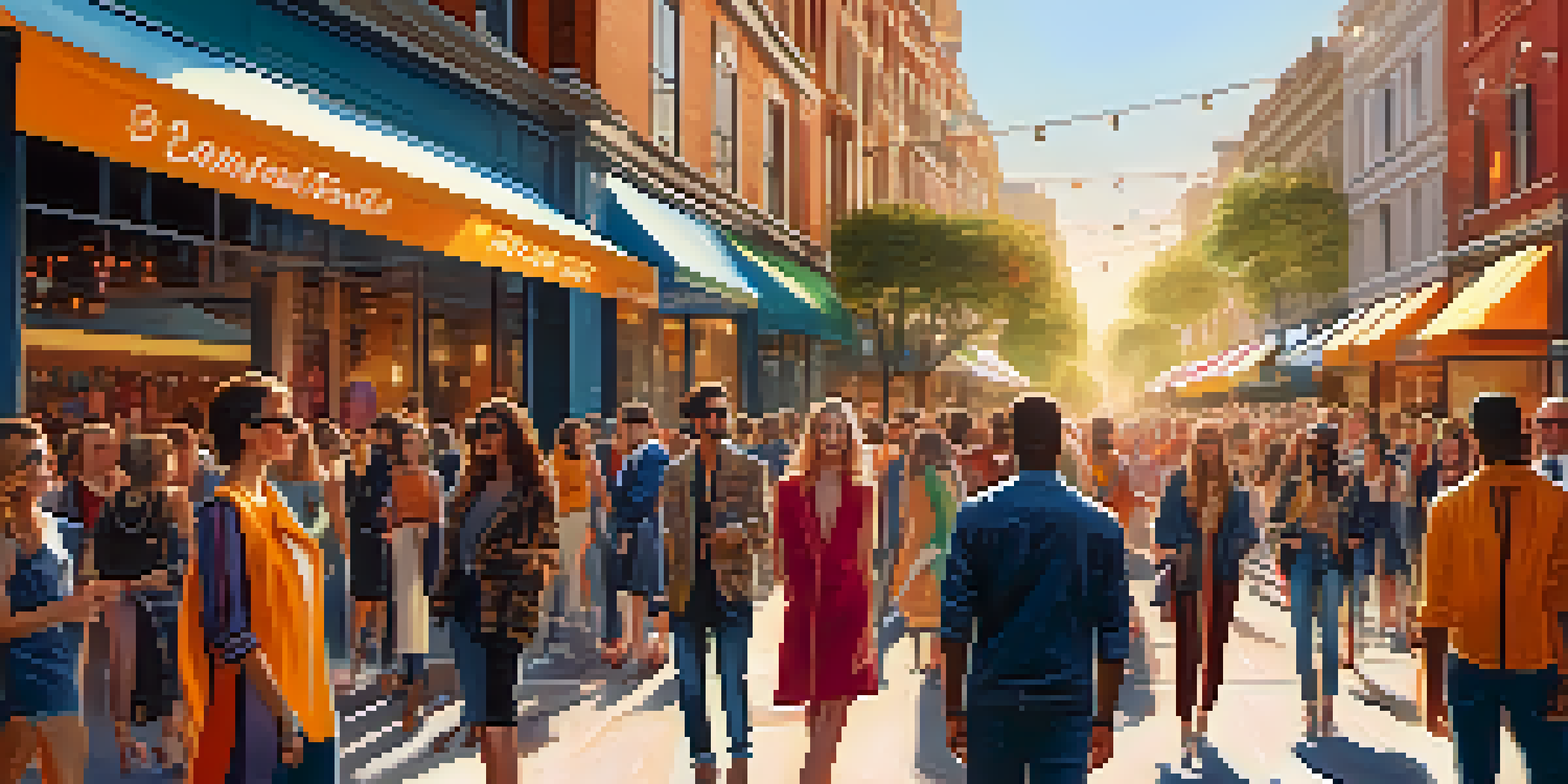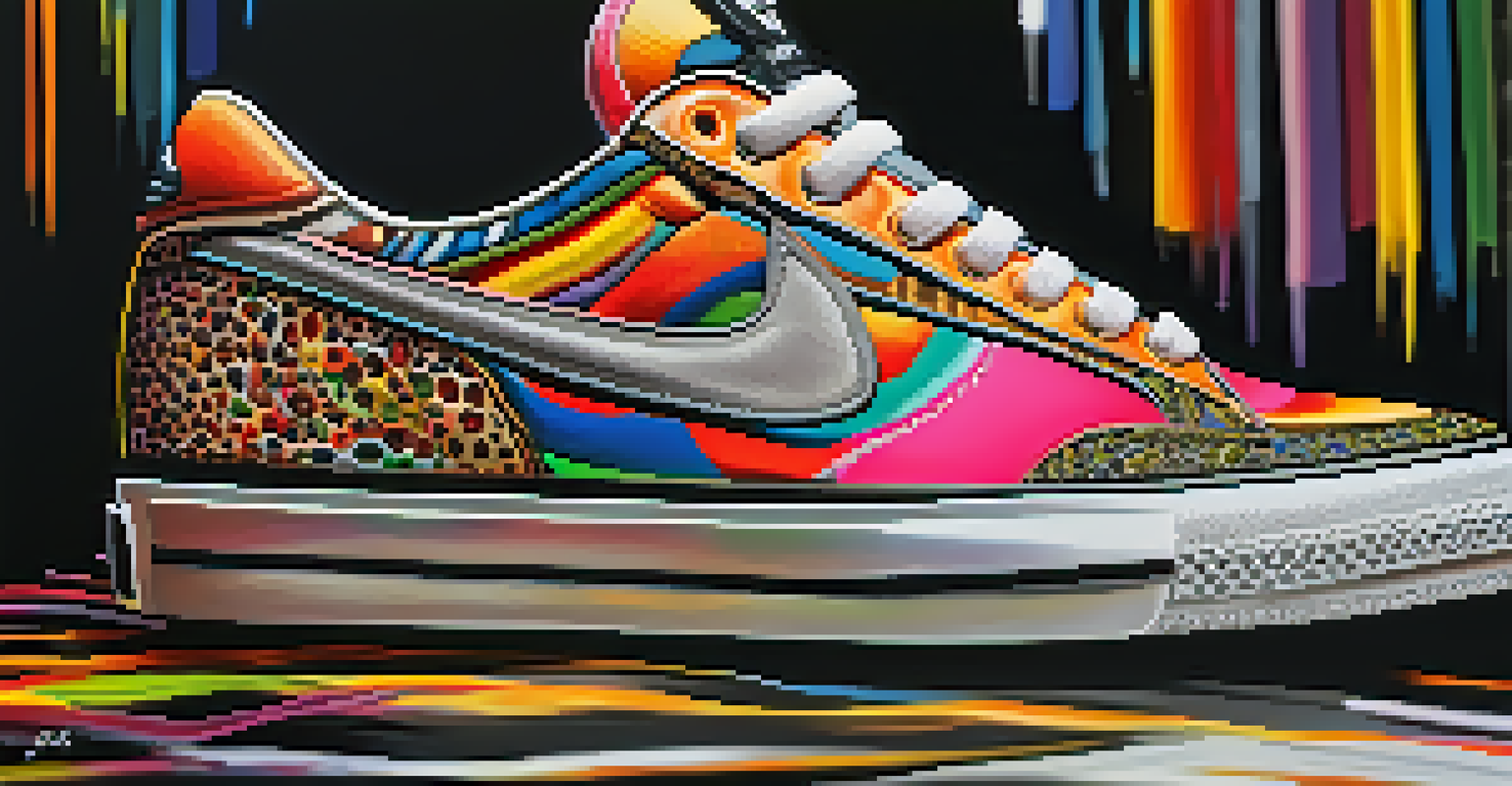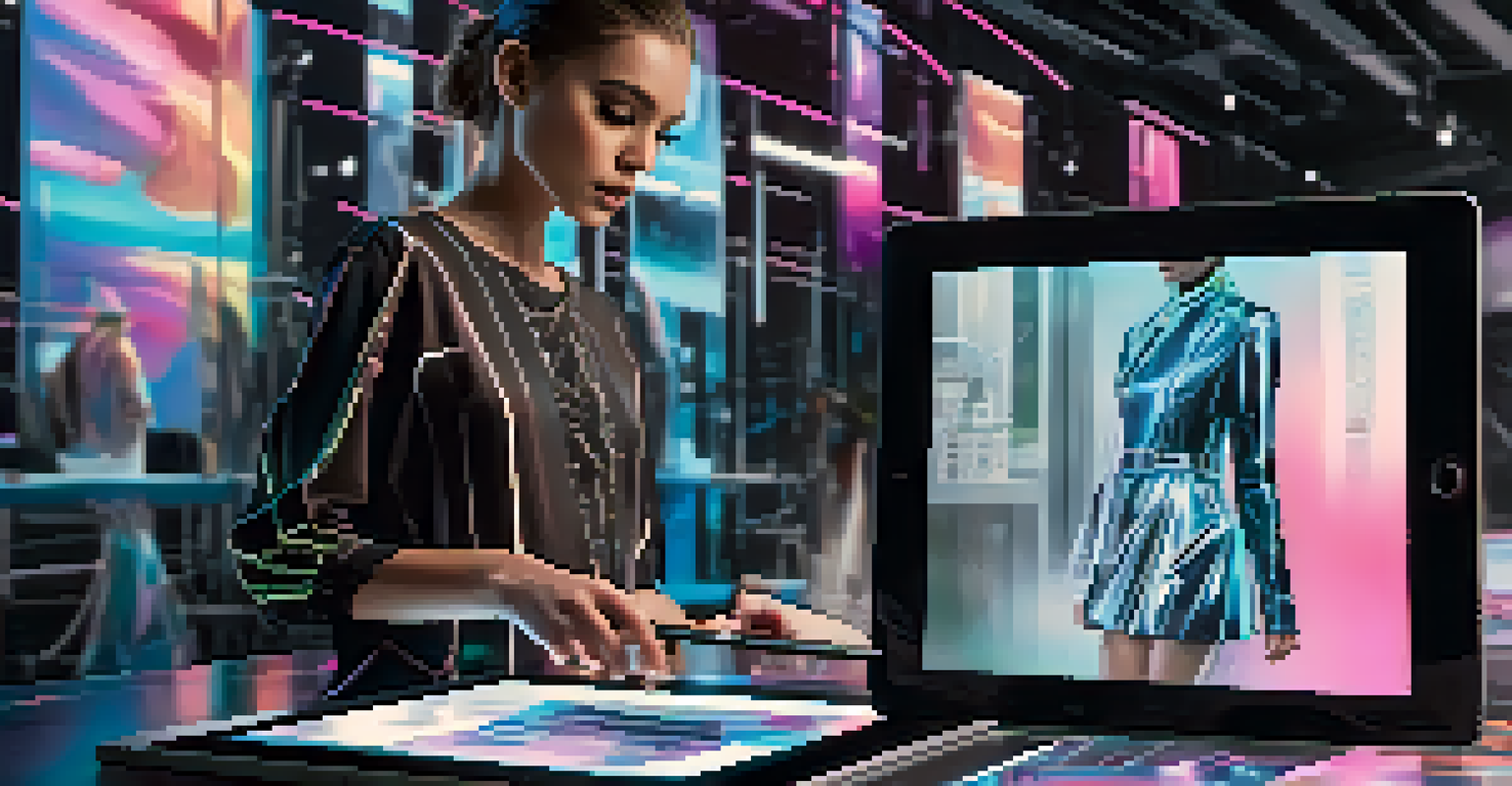The Impact of Fashion Collaborations on Consumer Behavior

Understanding Fashion Collaborations and Their Rise
Fashion collaborations have become a staple in the industry, blending the creative visions of brands and designers. These partnerships not only bring fresh ideas to the forefront but also attract a diverse audience eager to engage with unique offerings. Think of it like a delicious fusion dish that combines various flavors to create something entirely new and appealing.
Fashion is about dreaming and making other people dream.
Over recent years, we've seen brands like Adidas team up with Kanye West for Yeezy, which revolutionized sneaker culture. Such collaborations can create a buzz that traditional marketing often struggles to achieve. By leveraging the influence of celebrities and designers, brands can reach consumers who may not typically engage with them.
The combination of two brand identities often leads to a heightened sense of exclusivity and urgency among consumers. When people know that a collaboration is limited edition, the fear of missing out (FOMO) kicks in, driving quicker purchasing decisions. This dynamic showcases how collaborations can effectively reshape consumer perceptions and behavior.
How Collaborations Drive Brand Awareness
One of the most significant impacts of fashion collaborations is the boost in brand awareness they provide. When two well-known names come together, they often attract media attention and social media buzz, effectively doubling their reach. This is akin to a popular band featuring a lesser-known artist—suddenly, the smaller name gets a spotlight they might not have had on their own.

Collaborations often introduce brands to new demographics, expanding their customer base. For example, when a high-end fashion brand collaborates with a streetwear label, it can draw in younger audiences who may previously viewed the luxury brand as unattainable. This strategic alignment helps brands tap into different markets, enhancing their visibility and appeal.
Collaborations Boost Brand Awareness
Partnering with well-known brands enhances visibility and attracts diverse audiences.
Moreover, these partnerships can create a sense of community among consumers, as they feel part of an exclusive club. The shared excitement of a collaboration often leads to increased social media engagement, with consumers posting their purchases and experiences online, further amplifying brand awareness.
Influence on Consumer Purchasing Decisions
Fashion collaborations can significantly influence consumer purchasing decisions, often leading to impulse buys. When consumers see a product that merges styles or aesthetics from their favorite brands, it can trigger an emotional response that compels them to act fast. This phenomenon is similar to how a limited-time sale can persuade shoppers to make an unplanned purchase.
Collaboration is the essence of life. The wind, the trees, the sky, the water, we all collaborate together to create the beauty of nature.
Additionally, the hype surrounding these collaborations often leads to increased desirability and perceived value. Consumers might believe that by owning a collaborative piece, they are making a fashion statement or showcasing their knowledge of trends. This perception can drive them to prioritize these items over more conventional choices.
The psychology of scarcity plays a crucial role here too; when consumers think a product is rare or unique, they are more likely to want it. Limited edition items create a sense of urgency that encourages quicker decision-making, often resulting in higher sales volumes for brands involved in collaborations.
Creating a Sense of Exclusivity Through Collaborations
Exclusivity is a powerful motivator in fashion, and collaborations often enhance this feeling among consumers. When a brand announces a partnership, it can lead to the perception that the products are special or not easily accessible. This sense of rarity can make consumers feel privileged to own something that not everyone can get.
Think of it like a secret club; when you have something that only a few possess, it elevates your status among peers. Collaborations that produce limited runs can create a frenzy, where consumers are willing to go to great lengths, like camping out overnight, just to secure a piece of the collection.
Exclusivity Drives Consumer Demand
Limited edition collaborations create urgency and desirability among consumers.
This exclusivity not only drives sales but also fosters brand loyalty. Consumers who feel connected to a brand that offers unique collaborative products are more likely to return for future purchases, further solidifying the brand's place in their lives.
The Role of Social Media in Fashion Collaborations
Social media has transformed how fashion collaborations are marketed and consumed, amplifying their reach in unprecedented ways. Platforms like Instagram and TikTok allow brands to showcase their collaborative pieces instantly, generating excitement and engagement from followers. This immediate feedback loop can be likened to a real-time focus group, where brands gauge consumer reactions before and after a launch.
Influencers also play a crucial role in this landscape; their endorsements can lead to significant spikes in interest and sales. When an influencer shares a collaboration piece with their followers, it can create a ripple effect, encouraging their audience to explore and purchase the items. This level of influence showcases how collaboration strategies can be enhanced through digital platforms.
Moreover, social media fosters community discussions surrounding these collaborations, allowing consumers to share their thoughts and experiences. This dialogue not only builds anticipation but also creates a sense of belonging, as consumers connect over their shared passion for fashion and exclusive releases.
The Impact of Sustainability in Collaborations
As consumers become more environmentally conscious, the sustainability aspect of fashion collaborations is gaining attention. Many brands are now focusing on eco-friendly materials and ethical production practices when partnering up. This shift not only appeals to the growing demographic of sustainability-minded consumers but also sets a positive example within the industry.
For instance, collaborations that prioritize sustainable practices can foster a sense of responsibility among consumers. When shoppers know their fashion choices are contributing to a better planet, it can enhance their emotional connection to the product. This is similar to how consumers often feel good about buying from brands that give back to the community.
Sustainability Shapes Future Trends
Eco-friendly practices in collaborations resonate with conscious consumers and set brands apart.
Moreover, sustainable collaborations can differentiate brands in a crowded marketplace. As more brands adopt eco-friendly practices, those who lead in sustainability through collaborations can stand out and attract consumers who value these attributes, further influencing purchasing decisions.
Future Trends in Fashion Collaborations
Looking ahead, the landscape of fashion collaborations is likely to evolve as consumer preferences change. Collaborations may increasingly blur the lines between fashion and technology, incorporating elements like augmented reality and digital fashion. This could lead to entirely new experiences that engage consumers in ways we've yet to imagine, similar to how the rise of e-commerce transformed shopping.
Additionally, we may witness more cross-industry collaborations, extending beyond fashion to include sectors like gaming or music. This diversification can create innovative products that resonate with fans of these industries, showcasing how brands can leverage partnerships for maximum impact.

Ultimately, as consumer behavior continues to shift, brands will need to stay agile, adapting their collaboration strategies to meet changing demands. The future of fashion collaborations promises to be dynamic and exciting, offering endless possibilities for creativity and consumer engagement.